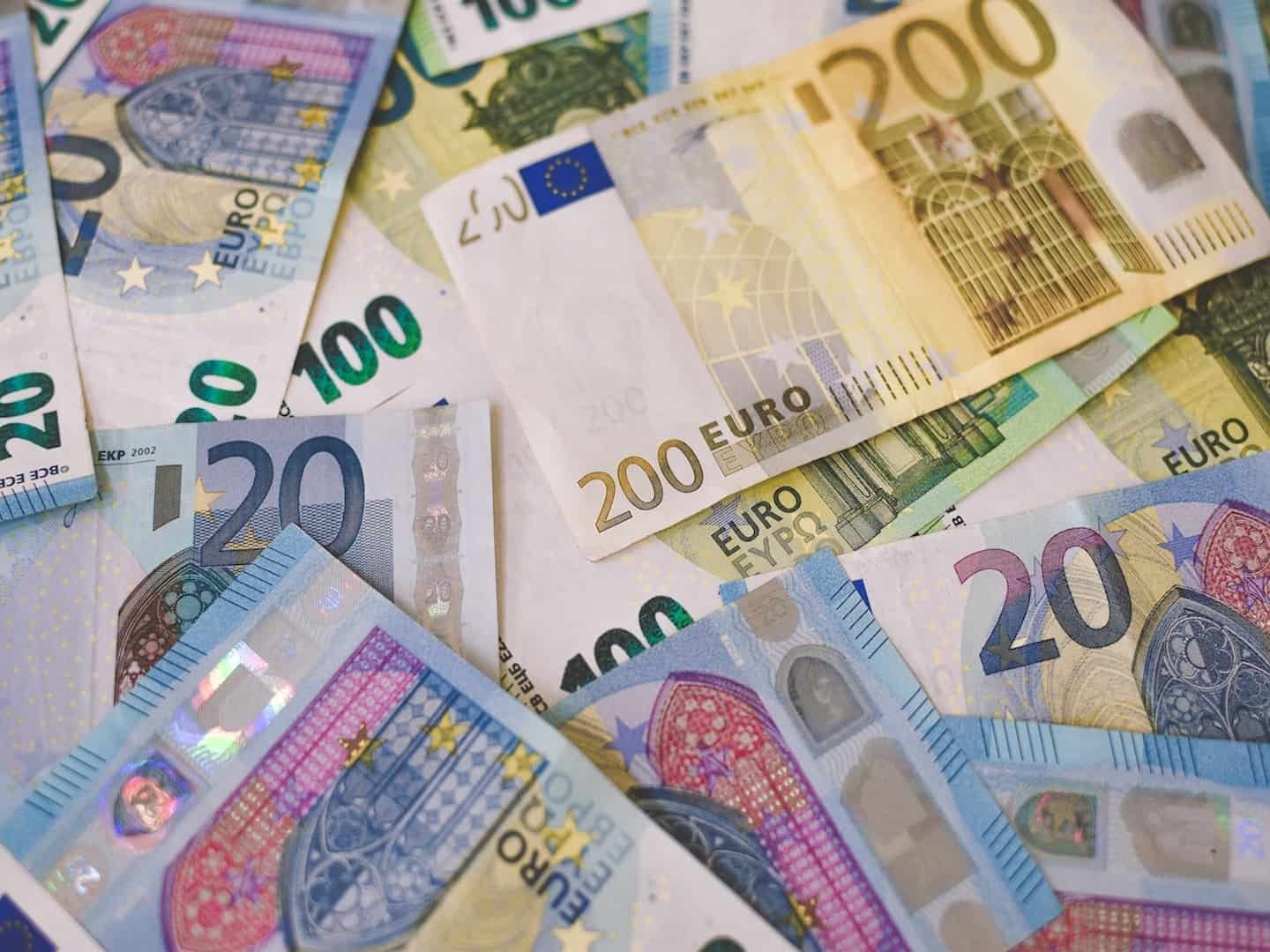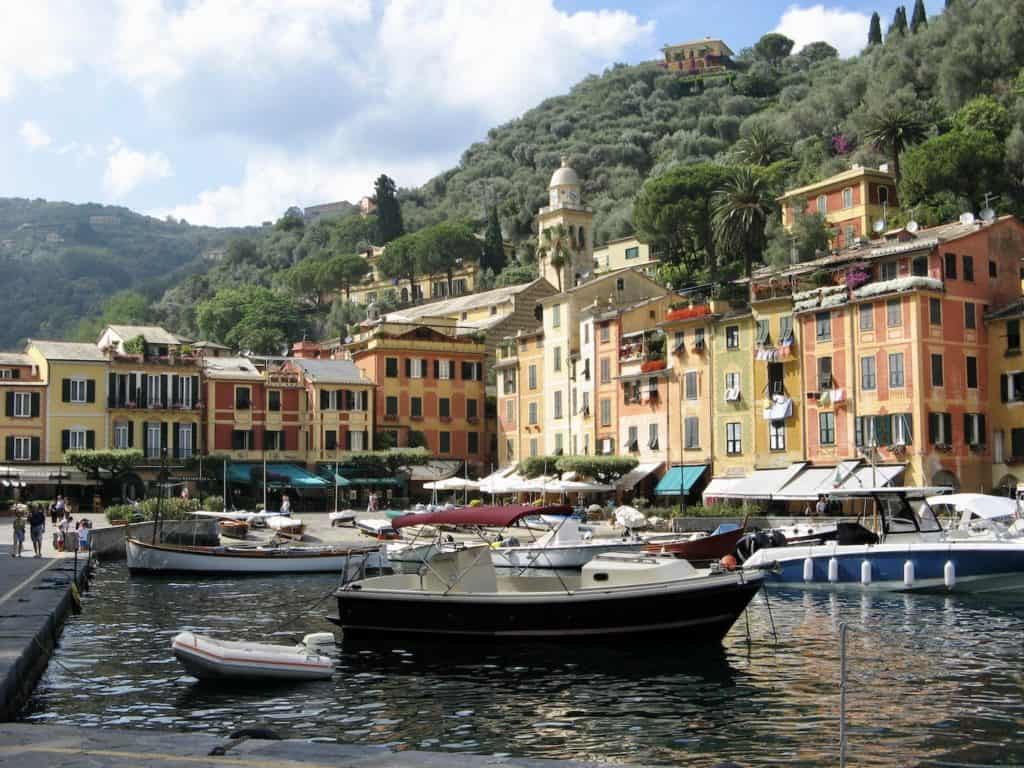A rich kaleidoscope of history, culture, architecture, art, food, and wine awaits travelers to Europe. Plan to make your trip fun, educational, and (relatively) stress-free by following expert tips on what to do before and during your time in Europe. Over 40 countries comprise Europe, and 27 are in the European Union (EU). Although the nations have many differences, certain commonalities are important for all travelers to understand. I’ve collected my best tips to help ensure your next trip to Europe is memorable – for all good reasons!
Europe is always high on my list of travel destinations. Not much time lapses (except for the global pandemic a few years ago) between my visits. There are always so many “must-sees” when planning travel, and it can sometimes feel overwhelming. But these tips have helped me when planning travel, and I hope they help you, too!

Since the euro (€) is the currency used in many European countries, I’ve used it in examples throughout this article. Of course, if you’re traveling to a country that doesn’t accept the euro, you’ll make corresponding adjustments. Please feel free to add your suggestions and tips for European travel at the end of this article.
1. Make Sure You & Your Documents are Travel-Ready
While planning your travel to Europe, verify all the documents you’ll need, including a passport and visa – plus an International Driver’s License if you’re planning to drive there. You may also want to consider travel insurance to cover important aspects of your time away.
> Airport Convenience: Ease Your Return Home
Research programs in your country that offer conveniences for travelers returning home. For Americans, one big one is Global Entry. This government’s Trusted Traveler program allows pre-approved citizens to experience an expedited clearance process at U.S. airports when returning home. (Some travel-related credit cards cover the application fee for Global Entry.)
> Passport: Check the Expiration Date
If you already have a passport, check its expiration date. It should be valid for at least six months after your expected return date. If not, it’s time to renew! If you don’t have a passport, apply for one. Passport application processing times can span several months, so don’t delay this action item.
> International Driver’s Permit: Will You Be Driving While Away?
Many European countries and/or car rental companies require an International Driver’s Permit (IDP) if renting a car there. If American, apply online and mail or visit a AAA office to complete the process. You’ll need your U.S. passport, two passport pictures, and $20 to obtain your IDP.
Tips for Driving in Europe
If you are planning to drive in Europe, check out my articles on renting a car in Europe and driving tips for Europe and one solely on driving in Greece. The articles provide tips for navigating narrow roads in historic city centers, GPS, and more. Also, carefully research the distance and driving times between your destinations to plan your trip realistically. Using Google Maps can help in this effort.
> Travel Insurance: Do You Need It?
Travel insurance can help when a medical emergency occurs, you need to cancel your trip, or you need to interrupt your trip. There are medical (and evacuation), “Cancel for Any Reason” (CFAR), “Interruption For Any Reason” (IFAR), and comprehensive policies (that cover several of these options). Contact your travel agent or search online to compare travel insurance options.
> Make Copies of Your Important Documents
Making at least two copies of your passport and other documents, like your regular driver’s license, is always a good idea. Give one copy to a trusted family member or friend; pack another separately from your passport (e.g., in your luggage) while traveling.
2. Check Travel Advisories
Global security and health concerns are often front and center when considering travel to other areas of the world. However, there are ways that travelers can be armed with the latest travel advisories. Check your government’s resources for travelers to find their latest recommendations and advisories.
If you’re American, check out The U.S. State Department and the Centers for Disease Control websites and enroll in the State Department’s free Smart Traveler Enrollment Program (STEP) to receive security alerts in the areas you visit while traveling.
All travelers should know the contact information for their embassies or consulates in the countries they’re visiting. Add those phone numbers to your smartphone contact list (along with other important contact info while away from home), so you have them handy – just in case.
3. Check Entry Requirements
When planning your European travel, check entry requirements for the countries you’ll be visiting. A new requirement for travel to EU countries is on the horizon.
In 2025, the EU will require European Travel Information and Authorisation System (ETIAS) approval for short-term tourists and business visitors from non-EU countries. Many visitors, up to that point, haven’t required visas for entry. Those countries include Australia, Canada, New Zealand, and the United States. The ETIAS is designed to improve security by collecting more information about people entering the EU. Apply online (when the new rule becomes active in 2025) at the ETIAS website. You’ll need your passport information and pay a small fee (€ 7 – less than US $10). Only online applications are accepted.
4. Consider How You’ll Pay for Expenses
Spend time thinking about and taking action on the best way for you to prepare for paying for lodging, dining, entertainment, transportation, and purchases while in Europe. Here are some important tips to get you started:
> Contact your Credit Card and Debit Card Companies
- Ensure your credit card companies and bank know your travel dates so they don’t flag foreign transactions as potentially fraudulent while you’re away. (I forgot to contact my bank before traveling years ago, and I couldn’t withdraw cash from an ATM without phoning our bank while in Europe. 😬)
- While talking with your bank, inquire about your daily ATM withdrawal limit. You may want to ask them to raise it temporarily if you plan to withdraw more cash than the current daily allowance.
- Make sure you’re using credit cards with no foreign transaction fees. Plenty of credit cards don’t charge those fees, so if you travel internationally with some frequency, it makes sense to have one that will leave more money in your wallet. You can search online for “credit card without foreign transaction fees.”
> Expect to Use Your Credit Card More Than Your Debit Card
VISA and MasterCard credit cards are widely used for all types of purchases in Europe. (Keep in mind that American Express and Discover cards are not as generally accepted in Europe as in North America.) Also, you’ll likely find that some places no longer accept cash. Some places have gone contactless, meaning you’ll use your credit card at the tap-to-pay symbol (four small curved lines) if your credit card has a contactless symbol.
> Obtain Local Currency
Even though many places accept credit cards, having local cash is critical as a safety net if your credit card is lost, stolen, or doesn’t work for some reason. Cash is also helpful when tipping for service (like tour guides) or using public restrooms, where a nominal fee is usually charged (generally €0.50-€1.00).
There are 27 countries in the European Union, and 20 use the euro as currency. Euros come in €0.01 to €2 coins, and bills range from €5 to €200. The rest of the European nations have their proprietary currency. Here’s a snapshot of the currency used in the ten most visited European countries (as of 2021).
> Know the Current Exchange Rates
The 20 countries that use the euro are Austria, Belgium, Croatia, Cyprus, Estonia, Finland, France, Germany, Greece, Ireland, Italy, Latvia, Lituania, Luxembourg, Malta, Netherlands, Portugal, Slovakia, Slovenia, and Spain. At the time of publication, the exchange rate is 1 EUR = 0.91 USD.
For European countries not listed above, their currency and current exchange rate, at the time of publication, are as follows:
| Albania – lek (1 ALL = 0.01 USD) Belarus – ruble (1 BYN = 0.40 USD) Bosnia and Herzegovina – mark (1 BAM = 0.57 USD) Bulgaria – lev (1 BGN = 0.57 USD) Czech Republic – koruna (1 CZK = 0.05 USD) Hungary – forint (1 HUF = 0.002 USD) Iceland – krona (1 ISK = 0.007 USD) Liechtenstein – Swiss franc (1 CHF = 1.12 USD) Moldova – leu (1 MDL = 0.06 USD) | North Macedonia – denar (1 MKD = 0.02 USD) Netherlands – guilder (1 ANG = .56 USD) Norway – krone (1 NOK = 0.10 USD) Poland – zloty (1 PLN = 0.24 USD) Russia – ruble (1 RRB = 0.01 USD) Serbia – dinar (1 RSD = 0.01 USD) Switzerland – franc (1 CHF = 1.12 USD) Turkey – lira (1 TRY = 0.05 USD) Ukraine – hryvnia (1 UAH = 0.03 USD) United Kingdom (UK) – pound (1 GBP = 1.25 USD) |

> Tips for Obtaining Local Currency
- Getting local currency is easy at bank-operated ATMs in Europe. You’ll often find ATMs in airports, cruise ports, train stations, and at banks in towns. Although you can use other ATMs operated by independent companies, you may not get as favorable a conversion rate as you would at a bank-owned ATM.
- When using ATMs, choose the local currency conversion rate – not the dollar conversion rate – to get a more favorable exchange rate.
- If you choose to obtain local currency before your trip, check with your bank or AAA office. There is usually a fee for this service, but some people like the peace of mind of knowing they’ll have local cash in hand when reaching their destination.
- Some avid travelers open a separate checking account (with an ATM card) at their local bank to use expressly for traveling. The account is funded with the amount set aside just for traveling. Doing so limits loss exposure should the ATM card to the primary bank account be lost or stolen. For example, say you have $10,000+ in your regular checking account. You could lose all that money if your ATM card is lost or stolen and someone gains access to your funds. If you have a separate checking account with $3,000 for traveling, that would be the sum you could lose.
> Understand the VAT (Value-Added-Tax)
Many European nations typically have a VAT (value-added tax) of 15-25% that’s added to most purchases. (Some types of items are exempt from the tax.) Travelers can obtain a refund of the VAT they’ve paid, and there’s usually a VAT refund location at airports. There is a complete list of VAT parameters, but here are the basics:
- You must be a visitor/tourist. (Make sure you have your passport to prove this when shopping.)
- The items you’re claiming must be bought within three months.
- A minimum amount (such as €175) must be spent in one shop/location to qualify for a VAT refund.
5. Plan Your Packing
Plan on packing lightly when traveling to Europe – especially if you’ll be moving from one hotel to another during your visit. Packing lightly means taking everything in a carry-on suitcase/duffel bag and one personal item. It can be done! And packing light makes getting around easier than traveling with large – or several – suitcases.
If you’re cruising or on a multi-day guided tour, packing lightly isn’t as much of a concern – although still a convenience for many – because you’re unpacking once while on a cruise, and others are probably handling your luggage on multi-day guided tours.
> Track Your Luggage and Other Belongings
Put a location-tracking device (like an Apple AirTag or Android Tile) in your luggage and personal item (like a backpack or purse), so you’ll always know where they are should you be separated from them. These location-tracking devices work with smartphones to help people locate items. For instance, if you have one of these devices in your luggage, and the luggage doesn’t make it to baggage claim at the airport when you land, you can tell where the bag is (using the AirTag or Tile) and notify the airline of their location when you submit a baggage claim report. Plus, if the Airtag or Tile remains in your luggage while you’re out sightseeing, you’ll always be able to find your way back to your hotel (or rental property) by following the path to your handy location-tracking device!
> Check Your Airline’s Baggage Restrictions
Check with the airline you’re flying to ensure you know their policies regarding the size and weight of luggage to avoid extra fees. This is especially true if you plan to travel with a carry-on suitcase and a personal item and don’t plan to check your luggage. Some airline gate agents will measure and/or weigh the bags you plan to carry on the airplane and may require you to check any bags larger than their prescribed dimensions.
6. Stay Connected While Traveling
Research your best option for using your phone, tablet, or computer while out of the country. There are a few basic actions to consider:
- Sign up for an international plan with your carrier (like Verizon or T-Mobile) for the dates you’ll be away, or buy a European SIM card for your phone in Europe to trade out for the one in your phone or tablet while on your trip.
- For extra security, consider a Virtual Private Network (VPN) for a more secure online experience. VPNs encrypt your data and shield your online activity from others. Do an online search for VPNs to learn more and read reviews of options.
- Put your phone in airplane mode while in Europe to minimize the time your phone may be using data. Using your devices only on Wi-Fi may minimize additional expenses.
- Make sure to run software updates on your devices before leaving home. Turn off automatic updates from your devices while away to minimize spending money on data.

7. Research Top Sights on Your List
Everyone has their wish list of “must see’s” and “must do’s” when traveling. To avoid disappointment, research the days and hours of operation for the places high on your list. For example, some museums are closed on Mondays or Tuesdays, and some popular markets are only open once a week.
Consider creating a spreadsheet to record the information you gather when checking days and hours of operation. Doing so can help you map out your itinerary, day by day, to match what’s open on certain days.
> Book Ahead for Tickets & Passes
Make online reservations for the places you plan to visit. This will provide guaranteed entry and lets you skip the lines of people (that can be quite long at popular places) waiting to purchase tickets onsite.
Also, consider purchasing special passes that allow entry to several venues while saving money. For example, the Paris Museum Pass provides entry to more than 50 museums and monuments. Check your travel guidebook or search online for details.
8. Get Proper Electrical Adaptors (and Maybe Converters)
Types of electrical voltage and outlets in Europe differ from what is common in North America. Europe’s electrical system runs on 220 volts – not the 110 volts in Canada and the U.S. In addition, electrical outlets are not the same.
> Electrical Converters
Packing converters may not be necessary (even when the electrical system requirements vary) because many modern electronics (like smartphones, tablets, and laptops) and appliances (like CPAP machines, hair dryers, and curling irons) are dual voltage, converting automatically. Check the specifications/labels on your devices to see if this is true for the electrical items you plan to pack.
> Electrical Outlet Adaptors
European countries don’t all use the same electrical outlets and plugs, and they are all different from North America. The best idea is to pack a universal adaptor that will work in various countries. For instance, England and Ireland use a plug with three rectangular prongs; European countries on the continent (e.g., France, Germany, Spain) take two round prongs. Either way, having an adaptor that works for more than one country makes sense if your travel plans take you to different countries. Check your travel guidebook or online for adaptor details about the country(ies) you’ll visit.
9. Download Helpful Apps & Content
Some key apps will make traveling a bit easier. Take a look at my complete list of helpful travel apps, but here are a few to get you started:
- Airline app for updated info and notifications about your flights. Remember to turn on notifications!
- Flush to find public restrooms.
- Google Translate to translate another language into English. With Google Translate, you can scan merchandise labels, street signs, and menu items in another language to learn their English equivalent.
- Google Maps for walking and driving directions.
- Uber to get from place to place while visiting a city.
10. Add Important Phone Numbers to your Smartphone
My motto is to always plan for the unexpected. That’s why it’s important to add phone numbers to your smartphone’s list of contacts for numbers you might need in an emergency, like the phone numbers of your credit card companies, your bank, your hotel(s), and your country’s embassy or consulate at your destination(s).
11. Learn Some European Conventions
Every country has its unique charm – and conventions. Here are some popular ones you’ll find in Europe. Check the specifics for the country(ies) you’ll visit (using a travel guidebook or an online search).
- The second floor of a building is considered the first floor. Consider this when booking a hotel or rental apartment.
- The date is typically written as day/month/year, so July 4, 2024, would be 04/07/2024.
- Commas and decimals (in numbers) are used conversely to how it’s done in the United States. For example, something costing two and a quarter euros appears as €2,25. Likewise, something costing fifteen hundred euros appears as €1.500.
12. Review Conversion Rules for Metric Measures
Unlike the United States, Europe uses the metric system. That means they measure temperature in Celsius (not Fahrenheit) and kilometers (not miles). This can be confusing. Here are some quick ways to get a rough estimate of conversion equivalence.
- Celsius to Fahrenheit: Double the number in Celsius and add 30. Example: 25º Celsius is about 80º Fahrenheit. (25º Celsius x 2) + 30 = about 80º Fahrenheit.
- Kilometers to Miles: Divide the kilometers by 2 + 10% of the original number. Example: 150 kilometers = 75 (150/2) + 15 (10% of km) = about 90 miles
13. Learn Basic Phrases for Your Destination
Nothing speaks to respect for another person’s culture and traditions than (attempting) to speak in their language. Learning just a few phrases like hello, please, thank you, good morning, and good night go a long way in establishing a good rapport with locals at shops, hotels, restaurants, museums, and the like.
A simple Bonjour (French), Hola (Spanish), Geiá sou (Greek, pronounced yah-soo), or Hallo (German) are great ways to initiate a conversation. Use Google Translate to get started on learning common phrases.
14. Choose to Convert Payments in Local Currency
You will often be given a choice for currency conversion when purchasing items or paying for services. Choose local currency when asked if you want transactions (when shopping, dining, or at an ATM) converted to local currency or dollars. It’ll result in a more favorable exchange rate.
15. Tip According to Local Customs
Europe has a different tipping culture (and salary structure for restaurant staff) than North America, where 20% is often considered a good tip for dining at restaurants. But in Europe, things are different, as a service charge is usually already included in the bill. Plan to round up your bill a small amount to acknowledge good restaurant (or taxi) service. It is still advisable to tip housekeeping staff in hotels – €1-€2 per day of stay and €5-10 to a hotel concierge for service.
16. Use Local Transportation
If you are not renting a car while away, you have several options like subways, public busses, hop-on-hop-off tourist buses, taxis, and ride-share services popular in Europe, like Uber and Bolt.
Consider writing the names and addresses of your intended destinations (like your hotel or rental property, airport, train station, or museums) on individual sticky notes or note cards. Then you can easily give that information to anyone who may help you reach your destination (like taxi and bus drivers or employees at train stations).
17. Keep Your Receipts
Always keep receipts for credit and debit card purchases, ATM transactions, and the like when traveling. If you do, you can cross-reference your credit card and bank statements once you get home (remembering that currency conversions are at play). Also, you’ll need receipts for some purchases if you plan to apply for a VAT refund when leaving a country. Pack a large baggie or envelope to keep all your receipts in one place.

18. Be Aware of Your Surroundings
Pickpockets tend to focus on their victims where they know tourists may be prevalent, like near high-volume sights (think the Colosseum in Rome) and in transportation hubs like metros and train stations.
Make sure your credit and debit cards, license, passport, and important documents are secure with you, and don’t walk around with a backpack or sling bag on your back – that’s an invitation for trouble in busy areas – so switch it to the front. Many travelers like to carry passports, credit cards, and debit cards in a money belt (worn under your clothing), a document holder (worn around your neck under your clothes), or a sling pack/pouch worn in front of the body.
19. Keep Your Online Activity Secure
- When charging devices in public spaces (like at airports), plug the charging cable’s USB into a brick/block and then into an outlet. Don’t plug your charging cable directly into USB ports. Some have been known to collect data from devices while charging.
- Be careful when entering your passcode when accessing your smartphone. Someone could be watching you and know how to gain access to all your data and financial accounts if they can steal your smartphone. Just a word to the wise. It’s been known to happen.
- On a related security note (to keep your travel plans private), don’t post pictures of your trip on social media until you return home. You don’t want to tell the world your home is empty while you’re away.
20. Record Your Trip – the Highlights and Lowlights
Keep a record of your trip – from beginning to end. Keep a (written or digital) journal and take lots of pictures and videos of places you visit and sights you see. Your emotions and experiences are best captured at (or near) the time they happen. That includes thrilling discoveries as well as not-so-great instances like getting lost. (Oh, I have some stories!) Chronicle everything that impacts you – from amazing architectural features to tiny details like colorful bags of spices at a market. You’ll appreciate all these travel memories in the months and years to come.
Finally, Expect Some Hiccups in Your Plans
Without fail, there will be inconveniences while traveling. A special museum you planned on visiting is closed. There’s a workers’ strike or unexpected flight delays. Things happen. Try to make the best of every situation and enjoy all that goes right with your plans. Happy travels!
Related Articles
European Destination–Focused Articles
France
- Exploring France: Normandy, Brittany, Provence, and Paris
- Southwest France: Spend a Day Exploring Fascinating Châteaux and Gardens
Ireland
Italy
- Exploring Italy: Piedmont, Cinque Terre, Tuscany, Amalfi Coast, Pompeii, Naples, Rome, Sicily
- Sicily, Italy: A Perfect 10-Day Itinerary
- Sicily, Italy: Visiting Mt. Etna — What You Need to Know
- Sicily, Italy: Villa Romana del Casale — A Fascinating Ancient Roman Villa
Trip Planning Articles
- Best Apps and Websites for Savvy Travelers
- How to Plan a Great Trip
- Rental Cars: Tips for Driving in Europe
- Rental Cars: Tips for Driving in Greece
- Renting a Car in Europe
- Travel Planning Timeline
- Vacation Home Rentals: How to Find the Best for You
- Viking Cruises: Best Action Steps After Booking
Final Thoughts
Travel to Europe is to be savored and will undoubtedly become the basis of some cherished memories. I have so enjoyed exploring Europe’s history, culture, food, and wine. Before traveling, though, taking stock of what is required and expected of travelers, plus safety precautions, is important. This article should help you plan important action steps to help you make the most of your trip. Happy Travels! Bon Voyage! Gute Reise! Viajes Felices! Buon Viaggio!
Comments?
Feel free to share your tips for traveling in Europe. Your ideas can help future travelers. Thank you! 🙂




